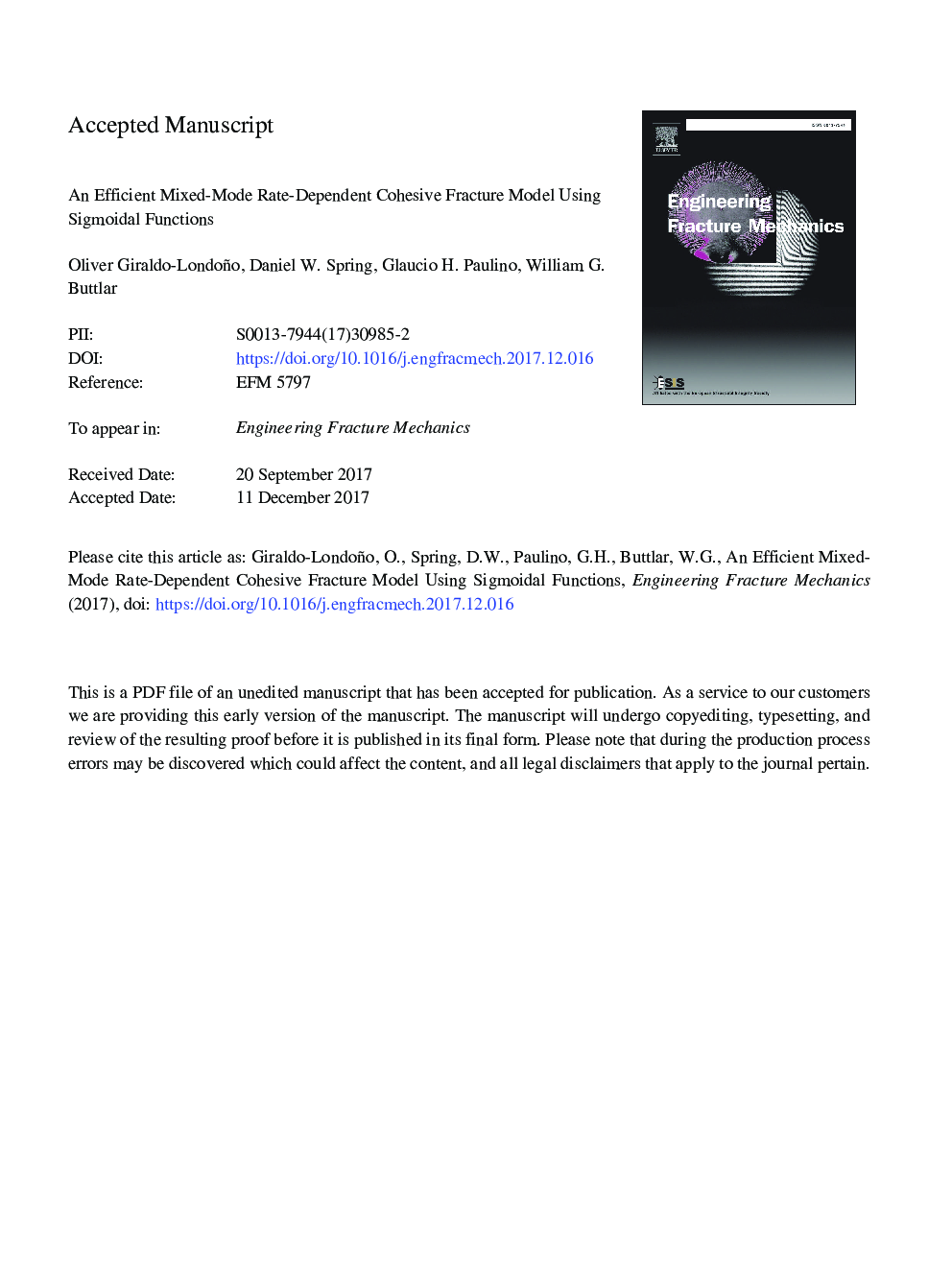| Article ID | Journal | Published Year | Pages | File Type |
|---|---|---|---|---|
| 7168980 | Engineering Fracture Mechanics | 2018 | 32 Pages |
Abstract
Rate-dependent fracture processes can be investigated by means of cohesive zone models (CZMs). For instance, one approach enhances existing CZMs with phenomenological expressions used to represent the fracture energy, cohesive strength, and/or maximum crack opening as a function of the crack opening rate. Another approach assumes a viscoelastic CZM in front of the crack tip. Although computationally less expensive, the former approach misses most of the physics driving the rate-dependent fracture process. The latter approach better represents the physics driving the rate-dependent fracture process, yet it is computationally more expensive. This work presents a methodology for studying mixed-mode rate-dependent fracture that is both efficient and approximates the viscoelastic material behavior in front of the crack tip. In this mixed-mode approach, we approximate the viscoelastic behavior in front of the crack tip using two rate-dependent springs. One spring acts in the normal direction to the crack plane, while the other acts in the tangential direction. In order to mimic a viscoelastic CZM, we assume that the stiffness of each spring is a function of the crack opening rate and enforce that their tractions are continuous with respect to changes in the crack opening rates. To account for damage, we scale the tractions from the rate-dependent springs using two damage parameters extracted from the Park-Paulino-Roesler (PPR) cohesive fracture model. The rate-dependent model is implemented as a user defined element (UEL) subroutine in Abaqus. While attaining a high level of accuracy, the present approach allows for significant savings in computational cost when compared with a CZM based on fractional viscoelastic theory.
Keywords
Related Topics
Physical Sciences and Engineering
Engineering
Mechanical Engineering
Authors
Oliver Giraldo-Londoño, Daniel W. Spring, Glaucio H. Paulino, William G. Buttlar,
